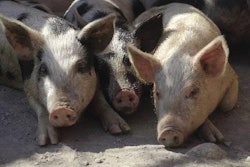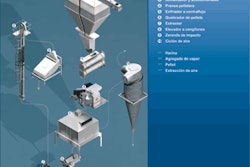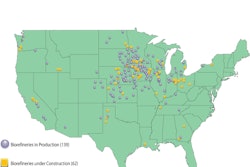The U.S. turkey industry has had more than its share of unexplained poult enteritis syndromes over at least the last two decades. These syndromes have typically been expressed as unthrifty, stunted poults with enteritis in the brooder house. The affected flocks never fully recover and they are more susceptible to environmental stresses, hemorrhagic enteritis virus vaccine reaction, E. coli, and other secondary infections caused by normally nonpathogenic organisms.
Poult Immunosuppression Pancreatic Enteritis Syndrome (PIPES) is the name that Dr. Brett Hopkins has given to the affliction in poults that has been known by different names over the years. Hopkins, speaking at the Midwest Poultry Federation Convention's Turkey Health Seminar, said that an investigation in 2007 into unexplained poult illnesses in commercial market turkeys from the Midwest to the East Coast led to finding a similar pathology and clinical disease as well as age at onset and duration. After reviewing cases in the field at several different locations, Hopkins said that the name PIPES provides an accurate description of the pathology that leads to stunting, enteritis and to a lesser degree, mortality. Industry sources estimate the cost of PIPES at three to five points of feed conversion across all flocks of turkeys.
Link between RSS and PIPES
"The clinical symptoms and known epidemiology of PIPES are eerily similar to Runting and Stunting Syndrome (RSS) in broilers," Hopkins said. "One of the etiologic agents of PIPES has been initially identified as an avian rotavirus type D, which is very similar to the avian rotavirus found in broilers with RSS." Immunosuppression plays a key role in both RSS and PIPES. Hopkins said enteritis has been seen in day-old poults in challenge studies when poults are given rotavirus isolated from turkeys with PIPES or from broilers with RSS symptoms. He said there is less immunosuppression in the poults in these challenge studies than what is seen in poults with full-blown PIPES. Hopkins said this suggests that, in addition to the rotavirus, one or two more viruses may be synergistically involved in PIPES and these may be the ones that initiate the immunosuppression.
Horizontal or vertical transmission
The epidemiology of PIPES in the field provides some clues as to how it is transmitted and how it might be controlled, according to Hopkins. There does not appear to be any association with breed or sex. Housing and rearing practices may influence the severity of the disease but not the onset of PIPES. Some companies have reported a seasonal onset, usually summer or early fall, but PIPES can most likely be found year round with seasonal peaks. PIPES has been recognized in most turkey growing regions from Texas to the eastern shores of the U.S. PIPES does not appear to have been recognized yet west of Texas.
The onset of PIPES always occurs in the brooder house with observation of typical clinical signs between eight to 12 days of age. Some brooder houses are split into two sections by a wire or chain-linked fence that separates the birds into two flocks in a single barn. This fence obviously would not stop the horizontal spread of a virus, but PIPES has not been shown to pass from one flock or half house to the other or to other barns on the same farm. The initial investigations have lead to a suspicion that there may be a link to certain young, less than 10 weeks in lay, breeder flocks and susceptible poults suggesting a role of vertical transmission or an important role of protective maternal antibodies.
Hopkins speculated that the PIPES occurs as a result of either or both, a passive vertical transfer of the infective immunosuppressive virus or the lack of passive transfer of protective maternal antibodies to their progeny.
This initial assumption is based on the observation that PIPES does not appear to spread from one half of the brood barn to the other. One side of the brood barn may be severely or moderately affected by PIPES and the other side or half has normal poults. The only difference is the breeder flock source or sources. When affected birds are mixed with normal birds during routine housing changes, the infection does not appear to spread.
Horizontal transmission may play some role as infected poults shed virus in the house and it is picked up by susceptible flock mates, but having susceptible flock mates is the key. Poults from other breeder flock sources housed in the same brood barn do not appear to be susceptible. There also may be an age of susceptibility of one to 14 days of age.
Testing autogenous vaccines
Ultimately, Hopkins thinks that maternal antibodies may be the means of controlling PIPES and RSS, and this means developing vaccines for turkey and broiler breeders.
He said that six broiler and one turkey company are in various stages of testing autogenous vaccines, which were derived from viruses isolated from their own birds, on breeders to see if this helps to control the disease in their complexes.
He said that the vaccines being used have either a rotavirus, a combination of two rotaviruses or two rotaviruses and an astrovirus.
The field use of these vaccines could provide the broiler and turkey industries relief from these nagging syndromes, but for now the jury is still out.


















